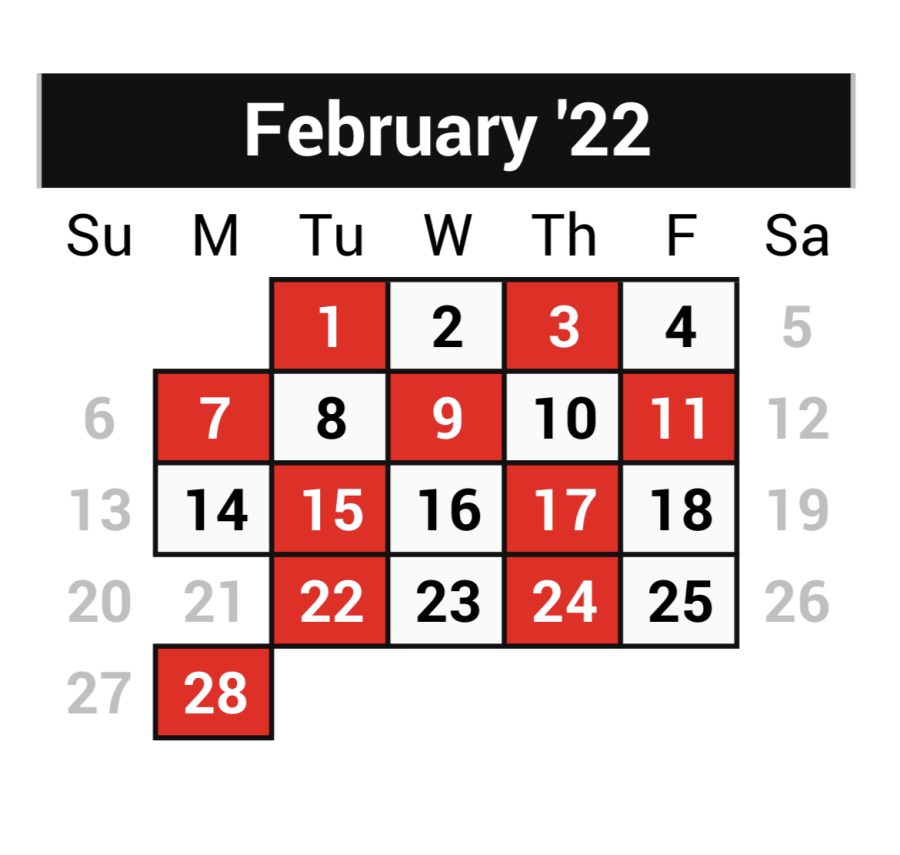[Editorial] MHS should keep block scheduling
February 2, 2022
MHS moved to a modified block schedule this school year, which consists of first and eighth periods that meet every day for 45 minutes. Then there are “red” and “white” days that have three 90-minutes blocks, as well. Second, third and fourth periods meet on red days; fifth, sixth and seventh periods meet on white days.
Students have mixed opinions on the block scheduling. Some like that they get two days to do their homework while others don’t enjoy the changing routine. With all factors accounted for, we should keep block scheduling at our school.
One way block scheduling is better than the everyday 45-minute classes is that students get an extra day to study and do homework. With 45-minute classes, students scramble every night to get their homework done for all eight of their classes, in addition to studying for any tests they might have.
Having fewer classes a day means students have greater focus. Instead of worrying about the class they have in 20 minutes, students focus on what is being taught. Some students’ grades have personally improved with block scheduling. They can focus on each class and learn more effectively.
With a block schedule, each student can also get more individualized teaching. Because students are in class for 90 minutes, each student has more time to ask questions and get help in areas they struggle. Teachers can also give this help without sacrificing a significant portion of their teaching time. This improves students’ grades as it allows for more understanding of the subject.
All in all, both block scheduling and everyday classes have their benefits, but block scheduling has far more benefits for both students and teachers. Therefore, Melissa should keep block scheduling for the following year.









![[Editorial] Schools should not have 4-day weeks](https://cardinalconnection.net/wp-content/uploads/2024/04/3.56-600x400.jpg)
![[Editorial] Texas schools should adopt 4-day weeks](https://cardinalconnection.net/wp-content/uploads/2024/04/blog_4-day-school-week.jpg)

![[Editorial] Passing periods should remain at 5 minutes](https://cardinalconnection.net/wp-content/uploads/2024/04/hall2-600x400.jpg)

![[Review] Denzel Washington delivers powerful performance in John Q](https://cardinalconnection.net/wp-content/uploads/2024/03/sddefault-600x450.jpg)
![[Review] Sonys Madame Web on record to become worst comic book film ever](https://cardinalconnection.net/wp-content/uploads/2024/03/GettyImages-1432889804-600x338.webp)

![[Review] Disneys Wish falls short of expectations at box office](https://cardinalconnection.net/wp-content/uploads/2024/01/hylyPAWw9ux6l7dqp3QGpsyEq6HNQ3xaEnJDXP9L-400x600.jpg)
![[Review] The Marvels flops at box office](https://cardinalconnection.net/wp-content/uploads/2023/12/themarvels_lob_mas_mob_03-600x286.jpg)